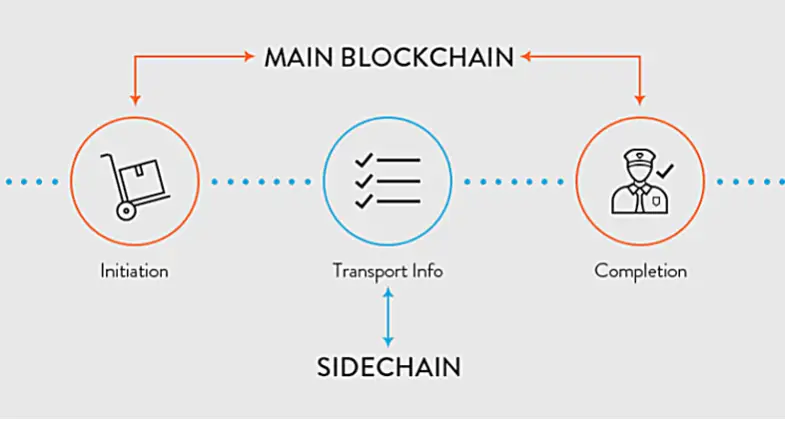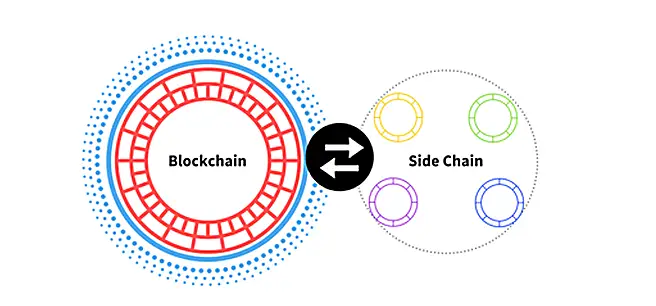In today’s article, we will be discussing Sidechain blockchain and different aspects of it. Sidechains are basically up-and-coming mechanisms that permit tokens.
And other digital resources from one blockchain to be firmly used in a separate blockchain and then be stimulated back to the original Blockchain if needed. Its characteristics hold tremendous potential to increase the capabilities of existing Blockchains.
How Do Sidechains Work?
Federations
A federation is a collection that serves as a transitional point between a parent chain and one of its Sidechains.
This cluster determines when the token a user has used are locked up and released. The creators of the Sidechain can decide the members of the alliance. A problem with the alliance structure is that it adds another sheet between the parent chain and the Sidechain.
Security
They are accountable for their own sanctuary.
If there isn’t enough pulling-out authority to secure a Sidechain, it could be chopped. Since each Sidechain is self-determining, if it is chopped or negotiated, the harm will be contained within that chain and won’t affect the parent chain.
On the other hand, should the parent chain become compromised, it can still function, but the peg will lose most of its value.
Particular miners are needed by Sidechain. These miners can be implemented through ‘fused mining’, whereby two disconnected cryptocurrencies, based on the same algorithm, are mined simultaneously.

Current Sidechain Platforms
RSK (Short for Rootstock)
RSK has created an open-ended source called Ginger for its testnets Sidechains.
It has a two-way hang with the Blockchain Bitcoin and rewards Bitcoin users via fused mining.
Rootstack’s goal is to facilitate the Blockchain Bitcoin to have smart contract potential and make payments much quicker.
Ardor’s Blockchain
As a service stands for business: Ardor uses the Stake’s proof of consensus mechanism. Ardor calls its sidechains ‘childchains’ and they are strongly integrated into the parent chain.
Security is improved because all transactions are practiced and secured by main chain forgers.
Most transactions are hard-pressed down to the Sidechain level, as the main mainchain retains negligible features. Global entities such as assets and currencies across chains can be accessed through childchains.
The Promise of Sidechains
It permits cryptocurrencies to interrelate with one another. They add litheness and allow developers to try out with Beta releases of Altcoins or software updates before releasing them on to the main chain.
Traditional banking characteristics like issuing and tracking possession of shares can be tested on childchains before moving them onto parent chains.
If the sanctuary mechanisms for Sidechains can be reinforced, the technology holds a pledge for immense Blockchain scalability.
Advantages of Sidechains
They have two most important advantages. Their very first advantage they have is that they are everlasting.
You do not have to generate a new Sidechain every time you need to make use of one. Once a Sidechain is constructed, it is preserved and can be used by anyone doing a particular task off the parent chain.
The other benefits are that they agree to interact between dissimilar cryptocurrencies. Developers get the chance to test software releases as well as beta coin releases before they are released on the parent chain.
Disadvantages of Sidechains
Miners are needed to make certain of the protection of the Sidechains. This makes the arrangement of new Sidechains an expensive venture.
Sturdy amounts of investments have to be made before any new Sidechain can be formed. Another negative aspect of it is the requirement of a federation.
The extra deposit formed by the federation could prove to be a feeble point for attackers.
In the end, we would like to come to closure as to scale Blockchain, Sidechain or Childchain, solutions cannot be destabilized.
They are disconnected Blockchains that are linked to the parent Blockchain using a two-way peg. They are a supplementary network that executes the matching function of faster transactions, lesser transaction costs and bigger scalability in terms of the number of transactions that can be sustained in a network at a given time.
In a nutshell, they are probable to bring about a noteworthy improvement in the abilities to exist Blockchains. It is the batman that will save Blockchain from becoming archaic :).







